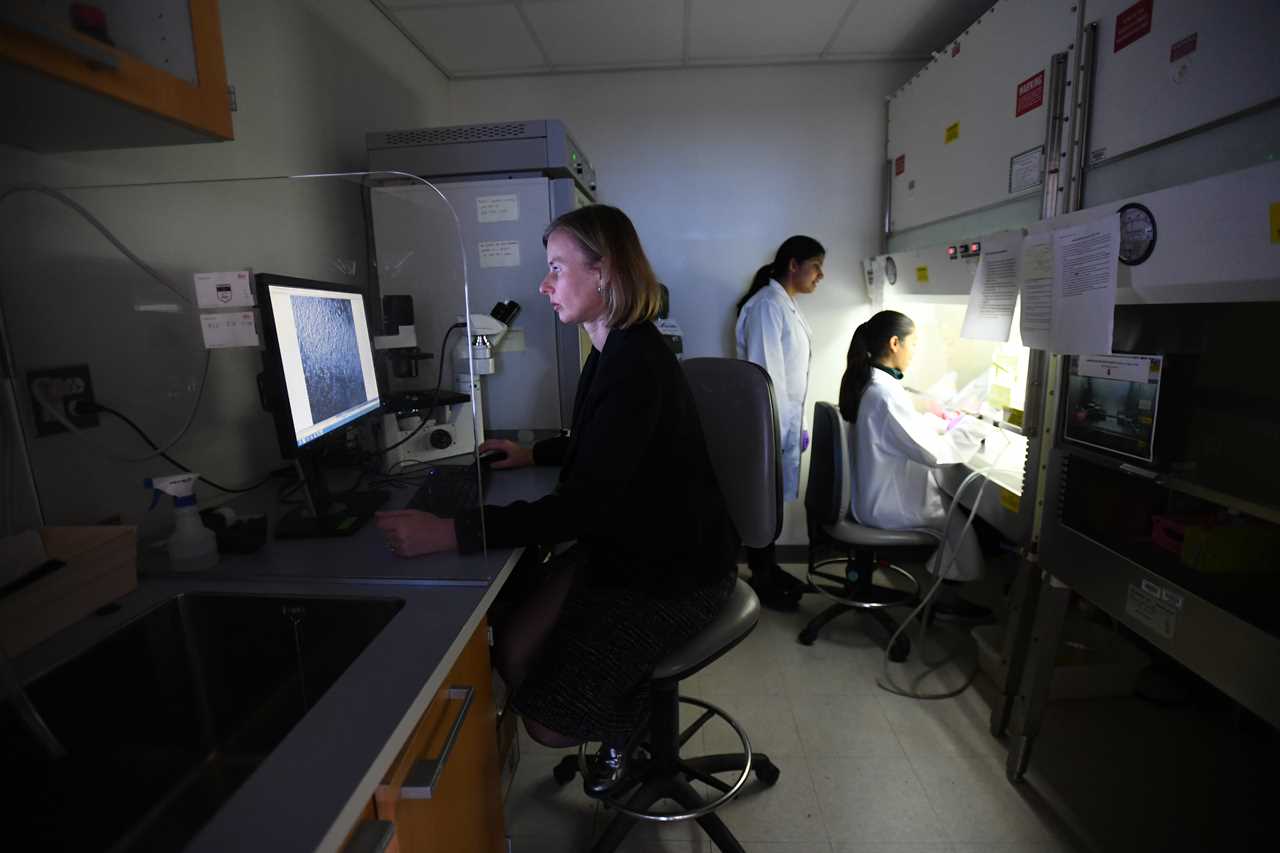---------------------------------------

One moment during the summer of 2020, Nick Kharufeh was enjoying an Independence Day party with his family in California. The next, he couldn’t see out of his left eye.
Kharufeh, now 26, was struck in the face by a malfunctioning firework, causing severe damage to and blindness in his left eye—damage his doctors said they could do little about. “I thought my life was over,” says Kharufeh, who until the accident had been training to become a pilot.
[time-brightcove not-tgx=”true”]
Only a few months later, however, Kharufeh’s mother learned about an experimental trial in Boston. Researchers there were working on a restorative technique meant specifically for patients, like Kharufeh, who had single-eye injuries that couldn’t be treated through typical methods.
A cornea transplant can help restore function and vision to a damaged eye, but only if the patient still has a healthy reserve of stem cells around the cornea. These stem cells—adult cells known as limbal stem cells, which are distinct from embryonic stem cells—maintain the clear surface layer of the eye; without them, the cornea becomes bumpy, opaque, and painful. This was the case for Kharufeh: white tissue had grown over his eye, which had also painfully fused with his eyelid in the aftermath of his accident.
Kharufeh picked up and moved from California to Boston to be part of the trial. “I was told that there wasn’t much hope by all my doctors out in California,” he says. “I figured, ‘I might as well [enroll] because the worst that can happen is I stay blind in that eye and the best that can happen is I see again.’”
Three years after his injury, the best-case scenario has come true for Kharufeh and several other people taking part in the trial, early results of which are described in a paper published Aug. 18 in Science Advances.
First, a surgeon harvests stem cells from a patient’s healthy eye through a tiny biopsy, explains principal investigator Dr. Ula Jurkunas, a corneal surgeon at the Harvard-affiliated hospital Mass Eye and Ear, who has fine-tuned this technique over the past 20 years. Then, technicians divide the biopsied sample into even smaller pieces and add enzymes that separate stem cells from their underlying tissue. The cells grow for about two weeks, until they’ve formed a sheet. The sheet of cells is then transplanted into the injured eye, restoring the natural process that keeps the cornea functioning correctly.
In two patients included in the Science Advances paper, this technique resulted in vision improvements without further treatment. And in two others, the procedure restored function well enough for them to receive cornea transplants.
The paper focuses on the first five people to enroll in the trial, in one of whom the stem-cell harvesting and grafting technique was not successful. Kharufeh joined the next phase of the trial and is thus not included in the published study, but has undergone the same procedure and will be included in future publications.
Other researchers, both in the U.S. and overseas, have experimented with various ways of using stem cells to restore vision. Regulators in Europe have already approved a therapy similar to the one developed at Mass Eye and Ear, and some doctors in the U.S. perform other kinds of limbal stem cell transplants. But Jurkunas says other methods require either a larger biopsy, which can be risky for the patient’s healthy eye, or donor cells, which can be rejected. The successful trial using such a small amount of a patient’s own cells is an exciting milestone. That said, the approach is still experimental. Jurkunas’ lab continues to hone it, and she says the next step is working with U.S. regulators to design larger studies. It will also be important, she says, to make sure other surgeons and laboratories can duplicate the technique she and her colleagues at Dana-Farber Cancer Institute, Boston Children’s Hospital, and the JAEB Center for Health Research spent so long perfecting.
The procedure described in the paper is also meant for a specific group of patients: people who still have one healthy eye from which to harvest stem cells, but also have an injury extensive enough to rule out a cornea transplant. Jurkunas estimates about 1,000 people in the U.S. meet that description annually. But, she says, the approach is a “stepping stone” to future cell therapies.
The procedure has already been huge for Kharufeh, whose left-eye vision is now blurry but functional, with the potential for even more dramatic improvement with further corrective surgery. “I can completely navigate my apartment or walk across the street with just my bad eye now,” he says.
Kharufeh has put aside his dream of becoming a pilot, but with his eyesight improving and fewer follow-up appointments required at the hospital, he’s even thinking of going back to school to get his master’s degree in marketing.
“It’s so cool,” he says, “to see out of my left eye.”
-----------------------------------------
By: Jamie Ducharme
Title: A New Technique Uses a Patient’s Own Stem Cells to Restore Their Vision
Sourced From: time.com/6305754/stem-cell-vision-restoration/
Published Date: Fri, 18 Aug 2023 18:00:00 +0000
Read More
Did you miss our previous article...
https://prohealthsciences.com/general-health-and-wellness/how-covid19-affects-the-immune-system
 General Health and WellnessFitness and ExerciseSupplements and VitaminsPandemic NewsVideosPrivacy PolicyTerms And Conditions
General Health and WellnessFitness and ExerciseSupplements and VitaminsPandemic NewsVideosPrivacy PolicyTerms And Conditions
